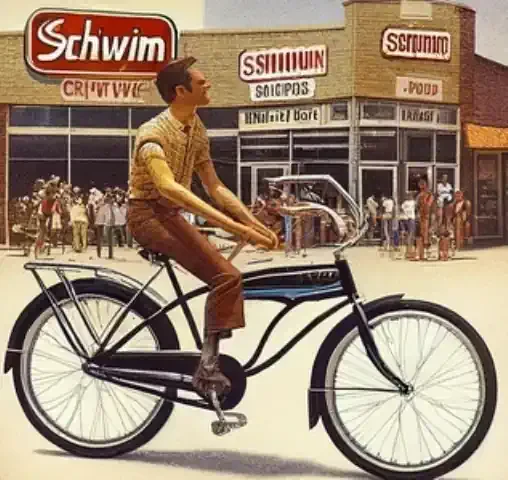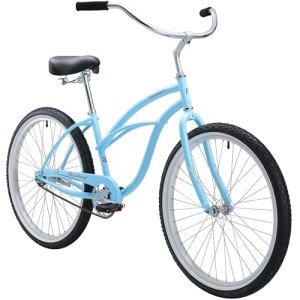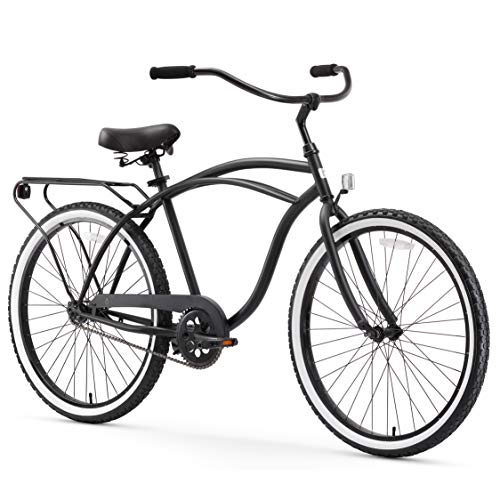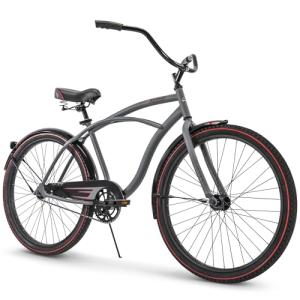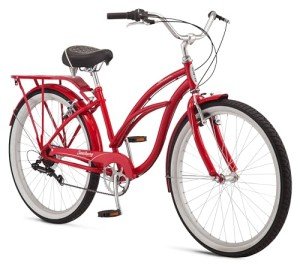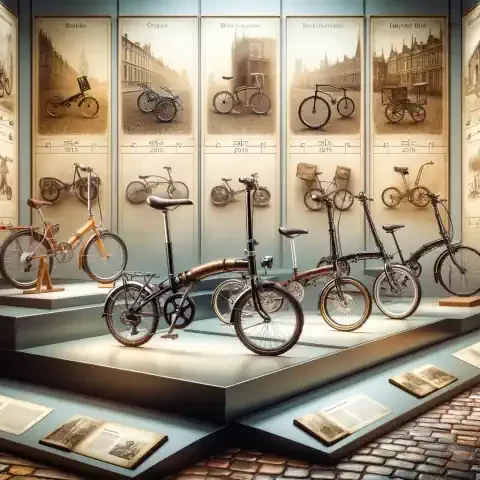Introduction To Single Speed Bicycles
What Is A Single Speed Bike?
A single speed bicycle, often simply referred to as a "single speed" or "SS," is a bike designed with a single gear ratio. Unlike multi-speed bicycles equipped with derailleurs and cassettes, single speed bikes have a straightforward drivetrain consisting of one chainring in the front and one cog in the rear. This stripped-down design eliminates the complexity of shifting gears, offering a unique riding experience that emphasizes simplicity and efficiency.
The History And Evolution Of Single Speed Bikes
The roots of single speed bicycles can be traced back to the earliest days of cycling, when bikes were inherently single-speed machines. As technology progressed, multi-speed gearing systems were introduced, revolutionizing the cycling world. However, single speed bikes never truly disappeared, remaining a popular choice among specific cycling communities and purists who appreciated their minimalist aesthetic and direct connection to the road.
In recent years, single speed bikes have experienced a resurgence in popularity. They have evolved beyond their utilitarian origins, becoming a symbol of urban cycling culture and minimalist lifestyle. Modern single speed bikes come in various styles, from classic track bikes to versatile commuter bikes, appealing to a wide range of riders.
The Growing Popularity Of Single Speed Bikes
The growing popularity of single speed bikes can be attributed to several factors:
Simplicity: Single speed bikes are inherently simple, with fewer moving parts and less maintenance required compared to multi-speed bikes. This makes them a hassle-free option for both seasoned cyclists and casual riders.
Efficiency: The lack of complex gearing systems translates to a more efficient power transfer, making single speed bikes ideal for flat terrain and urban commuting.
Weight: Single speed bikes are typically lighter than their multi-speed counterparts, enhancing agility and responsiveness.
Aesthetic Appeal: Many single speed bikes boast a clean and minimalist aesthetic that resonates with riders who appreciate the beauty of simplicity.
Community: Single speed cycling has fostered a vibrant community of enthusiasts who share a passion for this unique style of riding.
The Different Types Of Single Speed Bikes (Fixed Gear Vs. Freewheel)
Single speed bikes come in two main types:
Fixed Gear (Fixie): Fixed gear bikes have a drivetrain where the rear cog is directly connected to the hub. This means that the pedals are always moving when the bike is in motion, offering a unique and engaging riding experience that requires skillful pedaling techniques.
Freewheel: Freewheel single speed bikes have a traditional freewheel mechanism, allowing the pedals to remain stationary while the bike is coasting. This makes them a more approachable option for beginners and those who prefer a more relaxed riding style.
Why Choose A Single Speed Bike?
Choosing a single speed bike is a matter of personal preference and riding style. Some of the reasons why riders opt for single speed bikes include:
Simplicity: If you value a straightforward and low-maintenance bike, a single speed is a perfect choice.
Efficiency: If you primarily ride on flat terrain or prioritize a direct and efficient power transfer, a single speed can be an excellent option.
Challenge: If you're seeking a new cycling challenge that requires skill and finesse, a fixed gear bike can push your riding to the next level.
Style: If you appreciate the clean and minimalist aesthetic of single speed bikes, they can be a stylish addition to your cycling lifestyl
The Benefits Of Riding A Single Speed Bicycle
Simplicity And Low Maintenance
Single speed bikes are the epitome of mechanical simplicity in the cycling world. With only one gear and no derailleurs, shifters, or cables to worry about, there's less to break or malfunction. This translates to fewer trips to the bike shop and more time spent enjoying your rides. Routine maintenance becomes a breeze, often involving little more than cleaning the chain, lubricating the drivetrain, and checking tire pressure.
Lightweight And Efficient
The absence of additional gears and components makes single speed bikes inherently lighter than their multi-speed counterparts. This reduced weight contributes to a more nimble and agile ride, making them a joy to maneuver through city streets or navigate tight corners. Additionally, the direct drive system of a single speed bike eliminates energy loss associated with complex gearing systems, ensuring that every pedal stroke translates to forward momentum.
Improved Fitness And Strength
Riding a single speed bike can be a surprisingly effective workout. Without the option to shift gears, you're forced to rely on your own strength and stamina to conquer hills and maintain speed. This constant engagement of your muscles, particularly those in your legs and core, can lead to increased fitness and strength over time. Many single speed riders find themselves becoming stronger climbers and more efficient pedalers.
Enhanced Riding Skills
Riding a single speed bike, especially a fixed gear, requires a different set of skills compared to riding a multi-speed bike. You'll develop a heightened sense of timing and coordination as you learn to anticipate changes in terrain and adjust your pedaling cadence accordingly. Mastering techniques like track stands and skid stops on a fixed gear bike can further refine your bike handling skills.
A Unique And Stylish Ride
Single speed bikes exude a unique charm and character. Their clean lines, minimalist design, and often vibrant colors make them a head-turner wherever you go. Riding a single speed is not just about getting from point A to point B; it's about embracing a stylish and individualistic approach to cycling.
Choosing The Right Single Speed Bike For You
Frame Materials (Steel, Aluminum, Carbon Fiber, Titanium)
The frame material of your single speed bike significantly impacts its ride quality, weight, and durability. Each material offers unique characteristics:
Steel: Known for its classic look and comfortable ride, steel frames are durable and can absorb road vibrations well. They tend to be heavier than other materials but are often more affordable.
Aluminum: Lightweight and responsive, aluminum frames are popular for their efficiency and affordability. They offer a stiffer ride compared to steel but can be susceptible to fatigue over time.
Carbon Fiber: The lightest and stiffest option, carbon fiber frames are favored by performance-oriented riders. They offer excellent power transfer and a smooth ride but come at a higher price point.
Titanium: A premium material known for its strength, durability, and vibration damping properties. Titanium frames offer a unique combination of comfort and performance but are the most expensive option.
Frame Geometry And Sizing
Frame geometry plays a crucial role in determining how a single speed bike handles and feels. Factors like head tube angle, seat tube angle, and wheelbase all contribute to the bike's overall character. It's essential to choose a frame geometry that aligns with your riding style and preferences.
Proper sizing is equally important for a comfortable and efficient ride. Consult a bike sizing chart or seek guidance from a bike shop to determine the correct frame size for your height and body proportions.
Gearing Options (Gear Ratio, Chainring Size, Cog Size)
The gear ratio on a single speed bike is the relationship between the number of teeth on the chainring (front) and the cog (rear). This ratio determines how easy or difficult it is to pedal the bike.
Higher gear ratio: Easier to pedal on flat terrain but harder on hills.
Lower gear ratio: Harder to pedal on flat terrain but easier on hills.
Choosing the right gear ratio depends on your riding terrain, fitness level, and personal preferences. Experiment with different combinations of chainring and cog sizes to find the optimal balance for your needs.
Wheel Size (26-inch, 27.5-inch, 29-inch)
Single speed bikes come in various wheel sizes, each offering different benefits:
26-inch: Traditionally used on mountain bikes, 26-inch wheels are nimble and responsive, making them suitable for technical trails.
27.5-inch (650b): A versatile option that combines the agility of 26-inch wheels with the rollover capabilities of 29-inch wheels.
29-inch: Popular for their smooth rolling and ability to maintain momentum, 29-inch wheels are a common choice for cross-country and gravel riding.
Your choice of wheel size will depend on your intended riding terrain and personal preferences.
Tire Selection (Slick, Semi-Slick, Knobby)
The type of tires you choose will affect your bike's traction, rolling resistance, and overall performance.
Slick: Smooth tires with minimal tread offer low rolling resistance and are ideal for smooth roads and urban commuting.
Semi-slick: Tires with a smooth center tread and some side knobs provide a balance of speed and grip, making them versatile for mixed terrain.
Knobby: Tires with aggressive tread patterns offer maximum traction on loose surfaces like dirt and gravel, making them suitable for off-road riding.
Essential Gear And Accessories For Single Speed Cycling
Helmet
Your most crucial piece of gear is a well-fitting helmet. It's your first line of defense against head injuries in case of a fall or accident. Choose a helmet that complies with safety standards and fits snugly without being too tight. Look for features like MIPS technology, which provides additional protection against rotational forces.
Cycling Shoes And Cleats
While not mandatory, cycling shoes with cleats that clip into your pedals can significantly improve your pedaling efficiency and power transfer. They provide a secure connection to the pedals, allowing you to pull up as well as push down, engaging more muscle groups and reducing fatigue. Choose shoes that are comfortable and compatible with your pedal system.
Cycling Shorts And Jerseys
Cycling shorts with padded chamois offer comfort and support during long rides. They help reduce friction and chafing, preventing saddle sores and discomfort. Cycling jerseys are designed to wick away moisture, keeping you cool and dry during your rides. They often feature pockets for storing essentials like snacks, tools, or your phone.
Gloves
Cycling gloves serve several purposes. They provide cushioning to reduce hand fatigue, improve grip on the handlebars, and protect your hands in case of a fall. Look for gloves with breathable materials and padding in high-pressure areas.
Lights
If you plan to ride in low-light conditions or at night, lights are essential for visibility and safety. A front light illuminates your path and makes you visible to oncoming traffic, while a rear light alerts others to your presence. Choose lights with multiple brightness settings and long battery life.
Lock
A sturdy lock is a must-have if you plan to leave your single speed bike unattended. Invest in a high-quality U-lock or chain lock that can deter thieves and provide peace of mind.
Tools And Repair Kit
A basic tool kit and repair kit are essential for fixing flats, adjusting brakes, or making minor repairs on the go. Carry a multi-tool, spare tubes, tire levers, a pump or CO2 inflator, and a patch kit. Consider adding a chain tool and a few spare links in case of chain issues.
Mastering Single Speed Riding Techniques
Starting And Stopping
Starting and stopping on a single speed bike can be slightly different from a geared bike, particularly on a fixed gear.
Freewheel: Starting is similar to a geared bike; simply pedal to get going. Stopping involves applying the brakes and coming to a complete stop.
Fixed Gear: Starting requires a bit more finesse. With your dominant foot on the pedal at a 2 o'clock position, push off with your other foot while simultaneously applying pressure to the pedal. Stopping involves gradually resisting the rotation of the pedals with your legs, using your body weight to slow down, and eventually coming to a complete stop.
Shifting Your Weight (Climbing Vs. Descending)
On a single speed bike, shifting your weight is crucial for maintaining balance and control, especially on varying terrain.
Climbing: Lean forward and shift your weight over the handlebars to maintain traction on the front wheel and prevent it from lifting.
Descending: Shift your weight back over the saddle to lower your center of gravity and maintain stability.
Cornering
Cornering on a single speed bike requires smooth and controlled movements.
Approach: Slow down before entering the corner and choose your line.
Lean: Lean into the corner, keeping your inside pedal up to avoid striking the ground.
Look: Look through the turn to where you want to go, not at the ground.
Exit: As you exit the corner, gradually straighten the bike and accelerate.
Skidding And Braking Techniques (For Fixed Gear Bikes)
Fixed gear bikes offer unique skidding and braking techniques due to the fixed connection between the pedals and the rear wheel.
Skid Stops: To skid stop, shift your weight back, simultaneously resist the forward motion of the pedals, and apply pressure to the rear brake. This will lock the rear wheel, causing it to skid and slow the bike down.
Skip Stops: Skip stops involve quickly locking and releasing the rear wheel to create a hopping motion, slowing the bike down in short bursts.
These techniques require practice and should be performed with caution in safe environments.
Track Stands (For Fixed Gear Bikes)
Track stands are a signature move for fixed gear riders, allowing them to balance the bike without putting a foot down. It involves finding the balance point between forward and backward pressure on the pedals while maintaining a slight lean. This technique takes practice and patience to master.
Bunny Hops (For Fixed Gear Bikes)
Bunny hops are another impressive trick that can be performed on fixed gear bikes. They involve lifting both wheels off the ground simultaneously, allowing you to clear obstacles or hop curbs. It requires a combination of timing, coordination, and leg strength.
Maintaining Your Single Speed Bike
Cleaning And Lubrication
Regular cleaning is crucial for keeping your single speed bike in top condition. Wipe down the frame, wheels, and components with a damp cloth to remove dirt and grime. Use a degreaser to clean the chain, chainring, and cog, then rinse with water and dry thoroughly. Apply a light coat of lubricant to the chain, ensuring it reaches all the links. Avoid over-lubricating, as excess lube can attract dirt and grit.
Checking And Adjusting Tire Pressure
Proper tire pressure is essential for optimal performance and safety. Check your tire pressure regularly with a gauge and inflate them to the recommended PSI (pounds per square inch), which is usually printed on the sidewall of the tire. Under-inflated tires can increase rolling resistance and increase the risk of flats, while over-inflated tires can lead to a harsh ride and reduced traction.
Inspecting And Replacing Brake Pads
Brake pads wear down over time and need to be replaced when they become too thin. Inspect your brake pads regularly and replace them if they are worn down to the wear indicator line or if they are less than 1/4 inch thick.
Adjusting Chain Tension
A properly tensioned chain is essential for smooth shifting and preventing the chain from falling off. To check chain tension, push down on the middle of the chain between the chainring and cog. There should be about 1/2 inch of slack. If the chain is too loose or too tight, adjust it by loosening the rear wheel nuts, moving the wheel forward or backward, and then retightening the nuts.
Truing Wheels
If your wheels become untrue (wobbly), it can affect your bike's handling and cause premature wear on components. Truing involves adjusting the spoke tension to realign the rim. While it's best to have a professional true your wheels, you can learn to do it yourself with the right tools and techniques.
Replacing Worn-Out Parts
Over time, various components on your single speed bike will wear out and need to be replaced. These may include the chain, cog, chainring, brake pads, tires, and cables. Regularly inspect your bike for signs of wear and tear and replace parts as needed to keep your bike running smoothly and safely.
Single Speed Cycling Safety Tips
Be Visible And Wear Reflective Gear
Visibility is key to safety on the road. Wear bright, high-visibility clothing, especially during dawn, dusk, or night rides. Invest in reflective gear, such as vests, arm bands, and ankle bands, to enhance your visibility to motorists and other road users. Consider adding reflective tape to your bike frame and wheels for an extra layer of visibility.
Follow Traffic Rules And Signals
Always obey traffic laws and signals, including stop signs, traffic lights, and lane markings. Ride in the direction of traffic and yield to pedestrians. Use hand signals to indicate your intentions to turn or stop, and make eye contact with drivers before crossing intersections.
Ride Defensively And Be Aware Of Your Surroundings
Assume that drivers may not see you and be prepared to react to unexpected situations. Maintain a safe distance from other vehicles and be aware of potential hazards like potholes, parked cars, or opening doors. Use your peripheral vision to scan for potential dangers and be ready to maneuver your bike to avoid them.
Learn How To Fall Safely
Falling is an unfortunate reality of cycling, even for experienced riders. Learning how to fall safely can help minimize injuries. If you feel yourself losing control, try to relax and roll with the fall rather than stiffening up. Tuck your chin to your chest to protect your head and try to land on your shoulder and roll onto your back.
Use Hand Signals To Communicate With Other Road Users
Clear communication is essential for safe cycling. Use hand signals to indicate your intentions to turn or stop, and make eye contact with drivers to ensure they see you. Familiarize yourself with standard hand signals and use them consistently to avoid confusion.
Don't Ride Under The Influence Of Alcohol Or Drugs
Alcohol and drugs can impair your judgment, coordination, and reaction time, making cycling extremely dangerous. Never ride a bike while under the influence of any substance that could affect your ability to ride safely.
Popular Single Speed Cycling Routes And Events
Urban Cycling Routes (City Streets, Bike Paths)
Urban areas offer a wealth of single speed cycling opportunities. City streets provide a fast-paced and exciting environment to test your skills and navigate through traffic. Bike paths and dedicated lanes offer a safer and more leisurely way to explore urban landscapes. Popular urban single speed routes often include:
Historic districts and landmarks
Waterfront paths and parks
Bridges with scenic views
Neighborhoods with unique architecture and cultural attractions
Many cities also host group rides and social events specifically for single speed cyclists, providing opportunities to connect with fellow enthusiasts and discover new urban routes.
Off-Road Trails (Gravel, Dirt)
While single speed bikes are often associated with urban riding, they are also well-suited for off-road adventures. Gravel roads and dirt trails offer a challenging and rewarding experience for single speed cyclists. The lack of gears encourages you to focus on your pedal stroke and terrain reading skills. Popular off-road single speed routes include:
Forest trails
Fire roads
Gravel grinding routes
Mountain bike trails (for experienced riders)
Single Speed Bike Races And Competitions
Single speed bike races have gained a dedicated following among cyclists who crave the challenge and simplicity of this format. These races often take place on a variety of terrains, from velodromes to cyclocross courses to road circuits. Some popular single speed bike races include:
Single Speed World Championships (SSWC)
Single Speed Cyclocross World Championships (SSCXWC)
Local and regional single speed races and events
Group Rides And Social Events
Single speed cycling is as much about the community as it is about the bikes. Many cities and towns have active single speed groups that organize regular rides, social gatherings, and events. These gatherings offer a chance to meet fellow single speed enthusiasts, share tips and experiences, and simply enjoy the camaraderie of riding together.
The Future Of Single Speed Cycling
Growing Popularity And Innovation
Single speed cycling continues to experience a surge in popularity, driven by a growing appreciation for minimalist design, sustainable transportation, and the unique riding experience it offers. As more people discover the joys of single speed riding, the demand for innovative and high-quality single speed bikes is on the rise.
New Technologies And Materials
Advancements in bicycle technology and materials are also influencing the future of single speed cycling. Manufacturers are constantly exploring new ways to improve frame designs, gearing options, and component materials. We can expect to see more single speed bikes constructed with lightweight and durable materials like carbon fiber and titanium, offering enhanced performance and comfort.
The Role Of Single Speed Bikes In Sustainable Transportation
As the world becomes increasingly conscious of environmental concerns, single speed bikes are emerging as a sustainable transportation solution. Their low maintenance requirements, efficient design, and minimal environmental impact make them an attractive alternative to cars and other motorized vehicles, particularly for short-distance commuting and urban transportation.
The Continued Evolution Of Single Speed Bike Culture
The single speed bike culture is a vibrant and ever-evolving community. Riders from all walks of life are drawn to the simplicity, challenge, and camaraderie that single speed cycling offers. We can expect to see continued growth and diversification within the single speed community, with new events, group rides, and online forums fostering a sense of belonging and shared passion.
Getting Involved In The Single Speed Cycling Community
If you're intrigued by the world of single speed cycling, there are numerous ways to get involved. You can join a local single speed group, participate in online forums and discussions, attend single speed events, or simply strike up a conversation with fellow single speed riders you encounter on your rides. The single speed community is known for its welcoming and inclusive nature, making it easy for newcomers to find their place.
Summary
In this comprehensive guide to single speed bicycles, we explore the essence of these simple yet captivating machines.
A single speed bike, defined by its single gear ratio, offers a riding experience rooted in simplicity and efficiency. The origins of single speeds date back to the earliest days of cycling, yet their popularity has surged in recent years due to their low maintenance, lightweight design, and unique aesthetic appeal. Riders choose single speeds for various reasons, from the desire for a hassle-free ride to the pursuit of a minimalist lifestyle.
Two primary types of single speed bikes exist: fixed gear (fixie) and freewheel. Fixies offer a direct connection between the pedals and the rear wheel, demanding skillful pedaling, while freewheels allow for coasting.
Whether you're seeking a low-maintenance commuter bike, a fitness challenge, or a stylish ride, single speed bicycles offer a unique blend of simplicity, efficiency, and style.
